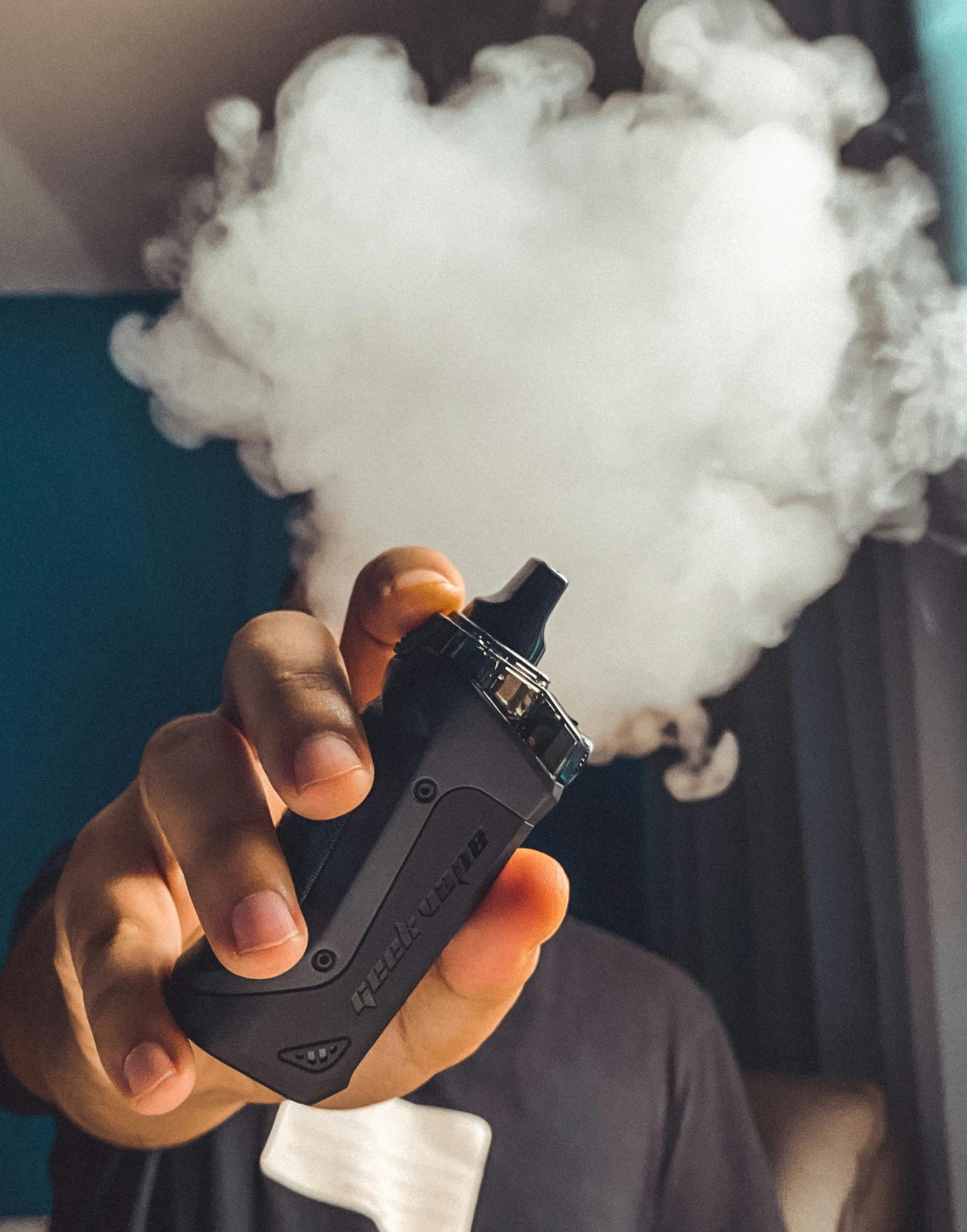I can provide you with some general knowledge about vaping. Vaping refers to the act of inhaling and exhaling vapor produced by an electronic cigarette or similar device. Here are some key points to consider:
Electronic cigarettes (e-cigarettes): E-cigarettes, also known as vapes, are battery-powered devices that heat a liquid (e-liquid or vape juice) to produce an aerosol or vapor that is inhaled by the user. They come in various shapes and sizes, including vape pens, pod systems, and mods.
Components of an e-cigarette: The main components of an e-cigarette typically include a battery, an atomizer or heating element, a cartridge or tank to hold the e-liquid, and a mouthpiece. When the user activates the device, the battery powers the heating element, which vaporizes the e-liquid.
E-liquids: E-liquids contain a mixture of propylene glycol (PG), vegetable glycerin (VG), flavorings, and often nicotine. PG and VG are used as solvents and create the vapor when heated. Flavorings provide various tastes, ranging from traditional tobacco flavors to fruity or dessert-like options. It's important to note that while some e-liquids contain nicotine, others are nicotine-free.
Health considerations: While vaping is generally considered less harmful than traditional cigarette smoking, it's not without risks. The long-term health effects of vaping are still being studied. Some potential risks associated with vaping include lung injury, nicotine addiction (if the e-liquid contains nicotine), and potential exposure to harmful chemicals and heavy metals present in e-liquids.
Popularity and regulation: Vaping gained popularity as an alternative to smoking, especially among young adults. However, regulations regarding the sale, marketing, and use of e-cigarettes vary across countries and jurisdictions. Some places have banned or restricted certain types of e-cigarettes, flavorings, or advertising practices to address concerns about youth nicotine addiction and public health.
Vaping terminology: The vaping community has developed its own terminology. Some common terms include "vaper" (a person who uses e-cigarettes), "cloud chasing" (producing large vapor clouds), "sub-ohm vaping" (using atomizers with resistance below 1 ohm), and "dripping" (applying e-liquid directly to the atomizer).
It's important to note that my knowledge cutoff is September 2021, so there may have been advancements or changes in vaping technology, regulations, or research since then.
Certainly! Here are some vaping prevention resources that can provide you with more information and support:
-
Centers for Disease Control and Prevention (CDC): The CDC offers a comprehensive section on their website dedicated to vaping and e-cigarette use. It provides information about the risks, statistics, and resources for parents, educators, and healthcare professionals. Visit their website at https://www.ejuicesteals.com/blogs/news
-
Truth Initiative: Truth Initiative is a nonprofit organization focused on tobacco and vaping prevention. They provide educational resources, campaigns, and tools to help individuals, especially young people, understand the risks of vaping. Their website, www.truthinitiative.org, offers fact sheets, videos, and interactive resources.
-
National Institute on Drug Abuse (NIDA): NIDA offers information on vaping and e-cigarettes, particularly in relation to nicotine addiction and its impact on the brain. Their website, www.drugabuse.gov, provides research-based resources, educational materials, and links to other relevant organizations.
-
Smokefree Teen: Smokefree Teen is a website dedicated to helping teens quit smoking and vaping. It offers information about the dangers of vaping, strategies to quit, and stories from real teens who have successfully quit. Visit www.smokefree.gov/quit-smoking/ecigs-menthol-dip/ecigs for more information.
-
American Lung Association (ALA): The ALA provides resources and support for individuals looking to quit smoking or vaping. Their website, www.lung.org, offers information on the health effects of vaping, tips for quitting, and a helpline for assistance.
-
Talk to a healthcare professional: If you or someone you know is struggling with vaping addiction, it's essential to reach out to a healthcare professional. They can provide personalized guidance, support, and resources to help quit vaping.
Remember, prevention and quitting vaping can be challenging, but with the right information, support, and resources, it is possible.
Educate yourself and others: Stay informed about the risks and dangers associated with vaping. Understand the potential health effects, addictive nature of nicotine, and the impact on overall well-being. Share this information with friends, family, and peers to raise awareness.
Promote a smoke-free and vape-free environment: Encourage the establishment of smoke-free and vape-free policies in public places, schools, and homes. Support initiatives that create a healthier environment and reduce exposure to secondhand vapor.
Start the conversation: Engage in open and honest conversations about vaping with young people. Discuss the risks, concerns, and reasons to avoid or quit vaping. Listen to their perspectives and address any misconceptions they may have.
Recognize signs of vaping: Be aware of the signs that someone may be vaping, such as the presence of vaping devices, unusual smells, increased thirst, nosebleeds, coughing, or changes in behavior or academic performance. If you suspect someone is vaping, approach the topic with care and concern.
Set a positive example: If you are a parent or influential adult, model healthy behaviors by not smoking or vaping. Children and teens are more likely to adopt healthy habits when they see positive role models around them.
Offer support and resources: If someone expresses a desire to quit vaping, provide them with resources and support. Help them explore various quitting strategies, such as nicotine replacement therapy, behavioral counseling, support groups, or mobile apps designed to assist with quitting.
Encourage healthy coping mechanisms: Vaping is often used as a way to cope with stress or negative emotions. Encourage individuals to find alternative, healthier ways to manage stress, such as exercise, hobbies, mindfulness, or talking to a trusted friend or counselor.
Stay resilient: Quitting vaping can be challenging, and relapses may occur. Encourage individuals to stay resilient and not get discouraged by setbacks. Celebrate small victories and provide ongoing support throughout the quitting process.
Remember, quitting vaping is a personal journey, and different strategies work for different individuals. It's crucial to tailor the approach to individual needs and preferences. If professional assistance is needed, encourage seeking help from healthcare professionals or addiction specialists who can provide personalized guidance and support.
